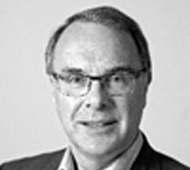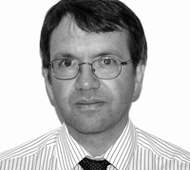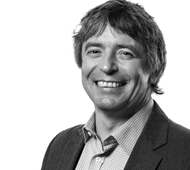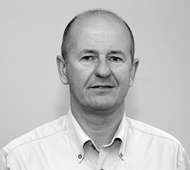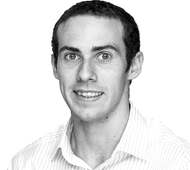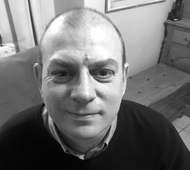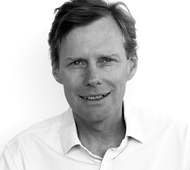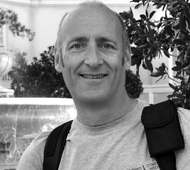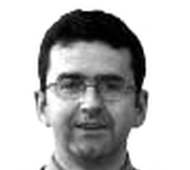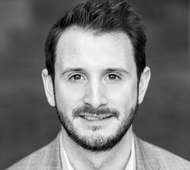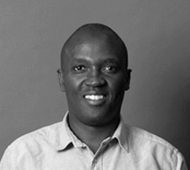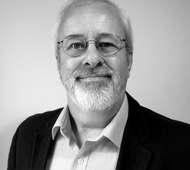10:30
Registration opens
11:00
Introduction to the Radio Technology SIG
11:05
A word from our Sponsor, Jim Walsh, VP of Engineering, Qualcomm Technologies International
11:10
Howard Benn, Samsung Electronics
'5G mmWave commercial developments'
5G mmWave has been talked about for a few years now, 3GPP have completed their first release (Rel-15) of the specifications. Samsung is at the heart of these developments, having moved from trial phase to commercial deployment in both Korea and the US. This presentation will cover our recent developments and trial activities, with a focus on both the successes and the challenges we have faced so far, and those we predict will challenge the industry. It will cover a range of technologies from beam forming on the air interface to networking virtualisation.
11:40
Mark Beach, Communication Systems & Networks Research Group, University of Bristol
‘Measurements, Modelling and Testing Millimetre Wave Communication Systems’
The use of directional antenna facets, such as an antenna array and beamformer, to provide boresight gain to mitigate the additional line-of-sight path loss at millimetre wave frequencies when compared with sub-6GHz spectrum is widely accepted by those engaged in 5G R&D. Real-world channel measurements addressing diffraction and reflection of millimetre wave signals has also identified significant differences in the characteristics of these mechanisms as well as the impact of surface roughness and the electrical properties (permittivity and conductivity) of the materials within the environment. This, alongside the directional properties of the transmitting and receiving antennas selectively illuminating a specific addressed volume, thus creates a significantly different realisation of the physical processes describing the composite or joint antenna and channel model for the design of 5G systems at millimetre wave. Hence, an accurate representation of the spatial channel at millimetre wave and the support of mobility is thus essential to aid both planning and testing of devices. Further, conformance testing of products will necessitate a cost-effective means for emulating these complex mechanisms. This presentation will summarise the measurements, models and approaches taken to emulate the millimetre wave channel by researchers at the University of Bristol, UK
12:10
David Morris, EEsof Application Engineer, Keysight
'Millimetre-Wave Circuit Simulation Challenges'
This talk will outline some of the challenges associated with the simulation of millimetre wave circuit designs. Examples will be provided which demonstrate recent design flow and simulation efficiency improvements which enable easier than ever access for circuit designers (IC, Module or PCB) to electromagnetic simulation and how real circuit transceiver component models can be used to excite a patch antenna array to assess beam-steering capabilities.
12:40
Networking lunch
13:30
Liam Devlin, CEO, Plextek RFI
'The Design of a Plastic Packaged Front-end IC for mmWave 5G'
The presentation will start by reviewing semiconductor technology choices and SMT packaging options for mmWave ICs. It will then describe the development of a front-end mmWave IC containing LNA, PA, RF power detector, transmit/receive switch and associated control logic. The IC was designed for 28GHz (27.5 to 28.35GHz) time division duplex (TDD) 5G applications. It was developed on a 4V, 0.15µm enhancement mode GaAs pHEMT process and so only positive supply voltages are required. It has been packaged in a standard, low-cost 5mm x 5mm overmoulded plastic QFN package making it suitable for the high volume, low cost manufacturing. The transmit path was optimized for high efficiency when backed-off from compression to provide linear amplification and preserve modulation fidelity. When driven at 1dB gain compression it produces an output power of around 20dBm at a PAE of 20%. When backed off for linear operation, to an IMD3 point of -35dBc, the measured PAE is 6.5%. The receive path has a measured gain of 13.5dB with a noise figure of around 3.3dB from a supply current of just 10mA. The receive path also demonstrates impressive linearity of +20dBm IP3 for a modest power consumption of just 40mW. Details of the design approach, the IC layout and the incorporation of packaging parasitics to provide optimised performance of the packaged part on a representative PCB will be presented.
14:00
Paul Morris, CTO, Cambridge Communications Systems (CCS)
‘Unlicensed, unlimited: 60GHz mmWave’
In his talk Paul discuss the capabilities and target applications for 60 GHz mmWave. This draws on the experience of recent trials and deployments whilst building upon the knowledge gained from deploying live 28 GHz mesh networks.
14:30
James Henderson, Consultant, Plextek
'Design Considerations for the Realisation of Cost-Effective, High-Performance mmWave PCBs'
This presentation will discuss the design considerations necessary for the practical realisation of complex PCB designs for mmWave systems. For commercial products, designs need to be cost-effective whilst maintaining high performance at this challenging part of the radio spectrum. Combining the antenna design on the same PCB as the RF and baseband electronics offers many benefits including lower system losses, removal of interconnects and ease of manufacture. Achieving the optimal overall performance requires appropriate engineering trade-offs to meet the contrasting system requirements.
15:00
Refreshment break
15:25
Paul Holes, Field Applications Engineer, Anritsu
‘Scaling the test equipment size to match millimetre wave test needs’
The advancement of millimetre wave technology is opening the door for numerous new applications, but higher frequency transmission comes with its own challenges, like higher propagation loss and issues with measurement repeatability. This paper discusses some of these challenges and how they can be overcome.
15:55
Nicholas Waegner, Qualcomm Technologies International
‘Network Design with 5G NR mmWave for enhanced indoor experience’
Nicholas will explore in his talk new opportunities for indoor venue network design with 5G NR mmWave. The network deployment studies for venues, enterprise and industry and commercialisation of 5G NR mmWave in 2019.
16:25
Mark Barrett, CMO, Blu Wireless
‘Millimetre wave wireless for improved wireless connectivity in Transport’
This presentation will discuss recent work at Blu Wireless on exploiting the large amounts of spectrum available at millimetre wave frequencies (notably 57-71 GHz) for improved wireless connectivity for road and rail transportation. Two recent projects will be described. Firstly, how millimetre wave communications is being applied to deliver gigabit grade connectivity to trains in order to improve passenger internet-based services. Secondly, the ‘Autoair’ project, one of six DCMS funded 5G Test Bed projects, aimed at 5G connected vehicle mobility applications will be described. Here a network of millimetre wave nodes has been deployed around the two mile high speed bowl at the Millbrook proving ground to support high speed gigabit level track to car (and train) applications.
16:55
Concluding remarks and event ends


